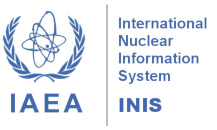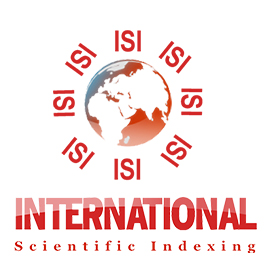Image quality and dose reduction in cardiac interventional procedures: application of an optimization strategy with typical dose value analysis
DOI:
https://doi.org/10.15392/2319-0612.2025.2943Palabras clave:
reference level, digital fluoroscopy, optimizationResumen
This study aimed to evaluate the impact of dose‑optimization strategies on radiation exposure during cardiac catheterization and angioplasty procedures. The investigation was carried out at a high‑complexity referral center using retrospective data, clinical‑protocol adjustments, and image‑quality assessments with dedicated simulators. Implemented measures included reducing the cine dose per frame and enabling post‑processing filters, resulting in reductions of up to 39 % in reference‑point kerma and 25 % in noise intensity under low‑dose conditions. In total, 714 procedures performed over five semesters were analyzed. Diagnostic reference levels (DRLs) were determined and compared with data from national and international literature. A statistically significant reduction in DAP (16.3 %) and Kₐ,r (12.8 %) was observed for catheterization procedures (p < 0.05). Although angioplasty procedures showed a similar trend, case variability limited statistical significance. The results demonstrate the effectiveness of technical interventions and continuous monitoring in lowering exposure levels, without compromising diagnostic image quality.
Descargas
Referencias
[1] EUCLID CONSORTIUM. Radiation dose and diagnostic reference levels for four interventional radiology procedures: results of the prospective European multicenter survey EUCLID. European Radiology, 2023.
[2] GUESNIER-DOPAGNE, Mélanie et al. Incidence of chronic radiodermatitis after fluoroscopically guided interventions: a retrospective study. Journal of Vascular and Interventional Radiology, v. 30, n. 5, p. 692-698. e13, 2019. DOI: https://doi.org/10.1016/j.jvir.2019.01.010
[3] CHENG, Ting Ting; YANG, Hui-Ju. Chronic radiation dermatitis induced by cardiac catheterization: a case report and literature review. Acta Dermatovenerologica Alpina, Pannonica, et Adriatica, v. 31, n. 4, p. 147-149, 2022. DOI: https://doi.org/10.15570/actaapa.2022.25
[4] OLIVEIRA, G. M. M. et al. Estatística Cardiovascular – Brasil 2020. Arquivos Brasileiros de Cardiologia, v. 115, n. 3, p. 308‑439, 2020. DOI: https://doi.org/10.36660/abc.20200812
[5] FRANCISCO, M. F. F. Avaliação da disponibilidade e acesso aos equipamentos de hemodinâmica no Brasil. Dissertação (Mestrado em Ciências) – Universidade Federal de São Paulo, São Paulo, 2021.
[6] TSALAFOUTAS, I. A.; TSAPAKI, V.; TRIANTOPOULOU, I. Evaluation of image quality and patient exposure in fluoroscopy using a phantom: is there any clinical relevance? European Journal of Radiology, v. 138, p. 109607, 2021. DOI: https://doi.org/10.1016/j.ejrad.2021.109607
[7] BUSHBERG, J. T.; SEIBERT, J. A. The essential physics of medical imaging study guide. s.l.: Lippincott Williams & Wilkins, 2022.
[8] TSAPAKI, V. Radiation dose optimization in diagnostic and interventional radiology: current issues and future perspectives. Physica Medica, v. 79, p. 16‑21, 2020. DOI: https://doi.org/10.1016/j.ejmp.2020.09.015
[9] VAÑÓ, E. et al. ICRP publication 135: diagnostic reference levels in medical imaging. Annals of the ICRP, v. 46, n. 1, p. 1‑144, 2017. DOI: https://doi.org/10.1177/0146645317717209
[10] INTERNATIONAL ATOMIC ENERGY AGENCY. Establishing guidance levels in X‑ray guided medical interventional procedures. Vienna: IAEA, 2009.
[11] HART, D.; HILLIER, M. C.; WALL, B. F. et al. National reference doses for common radiographic, fluoroscopic and dental X‑ray examinations in the UK. British Journal of Radiology, London, v. 82, n. 973, p. 1‑12, 2009. DOI: https://doi.org/10.1259/bjr/12568539
[12] PADOVANI, R.; COMPAGNONE, G.; D’ERCOLE, L.; et al. Livelli diagnostici di riferimento nazionali per la radiologia diagnostica e interventistica. Rapport ISTISAN, Rome, n. 17/33, 2017.
[13] BOGAERT, E.; BACHER, K.; THIERENS, H. A large‑scale multicentre study in Belgium of dose area product values and effective doses in interventional cardiology using contemporary X‑ray equipment. Radiation Protection Dosimetry, Oxford, v. 128, n. 3, p. 312‑323, 2008. DOI: https://doi.org/10.1093/rpd/ncm379
[14] D’HELFT, C. J.; BRENNAN, P. C.; MCGEE, A. M. et al. Potential Irish dose reference levels for cardiac interventional examinations. British Journal of Radiology, v. 82, n. 976, p. 296‑302, 2009. DOI: https://doi.org/10.1259/bjr/14857366
[15] BRNIĆ, Z.; KRPAN, T.; FAJ, D. et al. Patient radiation doses in the most common interventional cardiology procedures in Croatia: first results. Radiation Protection Dosimetry, v. 138, n. 2, p. 180‑186, 2009. DOI: https://doi.org/10.1093/rpd/ncp237
[16] MILLER, D. L.; HILOHI, C. M.; SPELIC, D. C. et al. Patient radiation doses in interventional cardiology in the US: advisory data sets and possible initial values for US reference levels. Medical Physics, v. 39, n. 10, p. 6276‑6286, 2012. DOI: https://doi.org/10.1118/1.4754300
[17] SAMARA, E. T.; AROUA, A.; DE PALMA, R. et al. An audit of diagnostic reference levels in interventional cardiology and radiology: are there differences between academic and non‑academic centres? Radiation Protection Dosimetry, v. 148, n. 1, p. 74‑82, 2011. DOI: https://doi.org/10.1093/rpd/ncq600
[18] COMPAGNONE, G.; CAMPANELLA, F.; DOMENICHELLI, S. et al. Survey of interventional cardiology procedures in Italy. Radiation Protection Dosimetry, v. 150, n. 3, p. 316‑324, 2012. DOI: https://doi.org/10.1093/rpd/ncr417
[19] KORIR, G. K.; WAMBANI, J. S.; YUKO‑JOWI, C. A. et al. Establishing diagnostic reference levels for interventional procedures in Kenya. Radiography, v. 20, n. 2, p. 148‑152, 2014. DOI: https://doi.org/10.1016/j.radi.2013.10.007
[20] SIMANTIRAKIS, G.; KOUKORAVA, C.; KALATHAKI, M.; et al. Reference levels and patient doses in interventional cardiology procedures in Greece. European Radiology, v. 23, n. 8, p. 2324‑2332, 2013. DOI: https://doi.org/10.1007/s00330-013-2813-2
[21] CUI, Y.; ZHANG, H.; ZHENG, J.; YANG, X.; LIANG, C. An investigation of patient doses during coronary interventional procedures in China. Radiation Protection Dosimetry, v. 156, n. 3, p. 296‑302, 2013. DOI: https://doi.org/10.1093/rpd/nct065
[22] CROWHURST, J. A. et al. Radiation dose in coronary angiography and intervention: initial results from the establishment of a multi‑centre diagnostic reference level in Queensland public hospitals. Journal of Medical Radiation Sciences, v. 61, n. 3, p. 135‑141, 2014. DOI: https://doi.org/10.1002/jmrs.67
[23] KIM, J.; SEO, D.; CHOI, I. et al. Development of diagnostic reference levels using a real‑time radiation dose monitoring system at a cardiovascular center in Korea. Journal of Digital Imaging, v. 28, n. 6, p. 684‑694, 2015. DOI: https://doi.org/10.1007/s10278-015-9773-9
[24] ALY, A. E.; DUHAINI, I. M.; MANAA, S. M. et al. Patient peak skin dose and dose area product from interventional cardiology procedures. International Journal of Medical Physics, Clinical Engineering and Radiation Oncology, v. 4, n. 1, 2015. DOI: https://doi.org/10.4236/ijmpcero.2015.41002
[25] GEORGES, J. L.; BELLE, L.; ETARD, C. et al. Radiation doses to patients in interventional coronary procedures: estimation of updated national reference levels by dose audit. Radiation Protection Dosimetry, v. 175, n. 1, p. 17‑25, 2016. DOI: https://doi.org/10.1093/rpd/ncw261
[26] OU‑SAADA, I. et al. Local diagnostic reference levels in interventional radiology. Journal of Medical Imaging and Radiation Sciences, v. 51, n. 2, p. 307‑311, 2020. DOI: https://doi.org/10.1016/j.jmir.2020.02.004
[27] VIEIRA, L. A. et al. Diagnostic Reference Levels Based on Patient Body Mass Index for Select Interventional Procedures in Minas Gerais/Brazil. Radiation Protection Dosimetry, v. 198, n. 7, p. 379-385, 2022. DOI: https://doi.org/10.1093/rpd/ncac048
Descargas
Publicado
Número
Sección
Categorías
- International Joint Conference Radio (RADIO)
- Brazilian Congress on Metrology of Ionizing Radiation (CBMRI)
- International Radiation Protection Association (IRPA)
- II Simpósio Internacional sobre Protección Radiologica, Cusco (SIPR)
- IX Congresso de Proteção Contra Radiações da Comunidade dos Países de Língua Portuguesa (PCR-CPLP)
Licencia
Derechos de autor 2025 Murilo Felisberto Morais de Assunção, Emerson Nobuyuki Itikawa, Jonas Oliveira da Silva, Guilherme Custódio Cândido Silva

Esta obra está bajo una licencia internacional Creative Commons Atribución 4.0.
Licencia: los artículos de BJRS tienen una licencia internacional Creative Commons Attribution 4.0, que permite el uso, el intercambio, la adaptación, la distribución y la reproducción en cualquier medio o formato, siempre que se otorgue el crédito correspondiente al autor o autores originales y a la fuente, proporcione un enlace a la licencia Creative Commons e indique si se realizaron cambios. Las imágenes u otros materiales de terceros en el artículo están incluidos en la licencia Creative Commons del artículo, a menos que se indique lo contrario en una línea de crédito al material. Si el material no está incluido en la licencia Creative Commons del artículo y su uso previsto no está permitido por la regulación legal o excede el uso permitido, el autor deberá obtener el permiso directamente del titular de los derechos de autor. Para ver una copia de esta licencia, visite http://creativecommons.org/licenses/by/4.0/






















